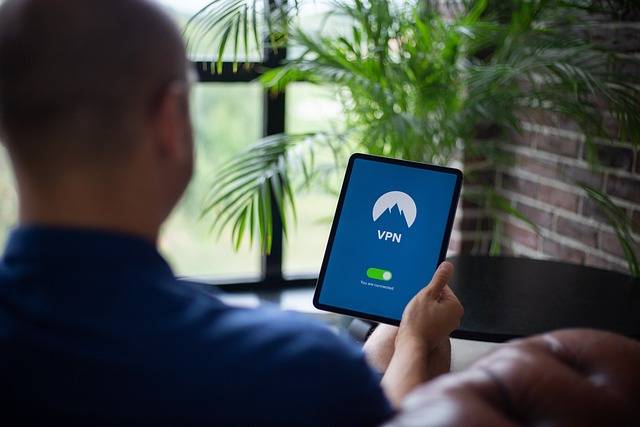In today’s world, wireless technology is essential for a variety of tasks. From streaming music to connecting devices, wifi and Bluetooth are two of the most popular forms of wireless communication.
However, many people have experienced interference between these two technologies and wonder if there is a way to optimize their performance.
In this blog article, we will explore the impact that wifi has on Bluetooth connectivity as well as strategies for reducing interference issues in order to improve wireless network reliability. We will uncover how these technologies interact with each other and investigate ways to maximize your experience with both wifi and Bluetooth connections.
Table of contents: Does wifi interfere with bluetooth
- Uncovering the Impact of Wifi on Bluetooth Connectivity
- Exploring the Interference Between Wifi and Bluetooth
- Investigating How to Optimize Wireless Performance
- Examining Strategies for Reducing Interference Issues
- Discovering Ways to Improve Wireless Network Reliability
Wireless technology has become an integral part of our lives, from connecting to the internet to streaming music and videos. Two of the most popular wireless technologies are Wi-Fi and Bluetooth. While both provide a convenient way to connect devices wirelessly, it is important to understand how they work together and if one can interfere with the other.
Wi-Fi is a type of wireless communication that uses radio waves for high-speed data transfer over short distances. It allows us to access the internet on multiple devices at once by connecting them all through a single router or modem.
On the other hand, Bluetooth is also used for wireless communication but operates in a different frequency range than Wi-Fi which makes it suitable for low-power applications such as transferring files between two phones or playing audio through speakers without wires.
The good news is that while both technologies use radio waves, they operate in different frequencies so there should be no interference between them when using properly configured equipment. This means you can have your laptop connected via Wi-Fi while simultaneously listening to music on your phone via Bluetooth without any disruption in either connection’s performance or quality of service (QoS).
However, this doesn’t mean that there won’t ever be any issues when using these two technologies together; if you are experiencing problems with either connection, then it could be due to interference from another device operating within their shared frequency range, such as microwaves or cordless phones which could cause disruptions in signal strength and QoS levels resulting in slower speeds or even dropped connections altogether depending on how close these external sources are located relative to your router/modem/phone.
Additionally, older versions of routers may not support newer standards like 80211ac, which can lead to further complications when trying to connect multiple devices at once since some may not have enough bandwidth available due to their limited capabilities compared to newer models supporting more advanced protocols like MU MIMO (Multi-User Multiple Input Multiple Output).
In conclusion, while proper configuration will ensure optimal performance between Wi-Fi and Bluetooth connections without any interference issues arising; users should still take into account external sources operating within their shared frequency ranges as well as ensure adequate bandwidth availability before attempting simultaneous usage across multiple devices otherwise unexpected results may occur leading potentially costly repairs down the line if left unchecked long enough!
Uncovering the Impact of Wifi on Bluetooth Connectivity
As technology continues to evolve, it is important to understand the impact of wifi on Bluetooth connectivity. With more and more devices relying on both wifi and Bluetooth connections, it is essential that we uncover how these two technologies interact with each other.
Recent studies have shown that when a device is connected to a wifi network, its ability to communicate via Bluetooth can be affected in various ways. In some cases, the range of connection can be reduced or even completely blocked due to interference from nearby networks or devices using the same frequency as your own device’s Bluetooth signal. Additionally, if multiple devices are attempting simultaneous communication over different frequencies within close proximity of one another, they may experience interference which could lead to slower speeds or even dropped connections altogether.
Fortunately, there are several steps you can take in order to reduce any potential issues related to this type of interference. Firstly, ensure your router’s wireless settings are set up correctly; second, try moving away from any other sources of wireless signals such as microwaves; third, make sure all your connected devices are running the latest firmware updates; finally, keep an eye out for new products designed specifically for reducing WiFi-Bluetooth crossover issues such as dedicated antennas and repeaters which help boost signal strength between compatible gadgets without compromising performance levels across either platform.
By taking proactive measures like these, you should be able to minimize any disruption caused by Wifi-Bluetooth crossover while still enjoying all the benefits both technologies offer!
Exploring the Interference Between Wifi and Bluetooth
As technology advances, more and more devices are connecting to the internet. This includes both wifi and Bluetooth connections. But with so many devices connected at once, it’s important to consider how they interact with each other. In particular, we need to know if there is any interference between wifi and Bluetooth signals that could affect performance or cause problems in our networks.
To answer this question, let’s first look at how these two technologies work together. Wifi uses radio waves to transmit data over a network, while Bluetooth uses short-range radio frequencies for communication between two devices within close proximity of each other. Both technologies use different frequency bands, which should theoretically prevent them from interfering with one another, but there have been reports of conflicts occurring when both are used simultaneously on the same device or in the same area.
The best way to explore this issue is by testing out various scenarios where both wifi and Bluetooth connections are active on a single device or multiple devices located near each other to determine if any interference occurs under certain conditions, such as signal strength or distance apart from one another.
Investigating How to Optimize Wireless Performance
Wireless performance is an important factor in the success of any business. As technology advances, it’s essential to stay up-to-date with the latest trends and investigate how to optimize wireless performance. One such area of investigation is whether wifi interferes with Bluetooth devices.
The short answer is yes, wifi can interfere with Bluetooth devices if they are both operating on the same frequency band or channel. When this happens, data transmission between them will be disrupted and cause slower speeds or even disconnection from either device. To prevent interference between these two technologies, it’s important to ensure that your network settings are configured correctly so that each device operates on a different frequency band or channel when possible.
To further improve wireless performance for both technologies, you should also consider investing in high-quality routers and access points as well as using advanced security protocols like WPA2 encryption which helps protect against malicious attacks while still allowing for fast data transfer rates across multiple networks simultaneously without disruption due to interference from other nearby networks or devices sharing the same frequencies/channels.
Additionally, make sure all connected devices have their own dedicated IP address assigned by your router/access point. Don’t conflict with one another when attempting communication over shared channels/frequencies – this will help reduce latency issues caused by congestion within a single network segment where multiple users may be trying to access resources at once without proper configuration settings applied beforehand (i..e static IP addresses).
Finally, keep an eye out for new developments in wireless technology that could potentially provide better coverage and faster speeds than what you currently have available – there’s always something new coming down the pipeline! Investing time into researching these advancements can pay off big time if implemented properly into your existing infrastructure setup; not only does it save money, but it also ensures optimal connectivity throughout all areas of operation regardless of distance from primary sources (routers & access points).
Examining Strategies for Reducing Interference Issues
Interference issues can be a major problem when it comes to wireless technology. As such, it is important to understand the strategies for reducing interference between wifi and Bluetooth devices.
One of the most effective ways to reduce interference is by using frequency hopping spread spectrum (FHSS) technology. This technique uses multiple frequencies in order to transmit data, which helps minimize interference from other signals that may be present in the same area. Additionally, FHSS also allows for faster transmission speeds than traditional single-frequency systems.
Another strategy for reducing interference is through careful placement of both wifi and Bluetooth devices within a given space. Placing them as far apart as possible will help minimize any potential overlap between their respective signal ranges and thus reduce any potential conflicts or disruptions caused by cross-talk between them.
Additionally, if possible, try not to place either device near large metal objects or walls that could potentially block or reflect signals from one another, further exacerbating any existing problems with signal strength or quality due to distance alone.
Finally, consider investing in higher quality equipment whenever possible; better hardware often translates into more reliable connections with fewer chances of experiencing dropped packets due to increased levels of noise on lower grade components compared against those found on higher-end models designed specifically for this purpose, such as those used in enterprise networks where reliability is key over cost savings measures taken elsewhere throughout the system’s design architecture itself.
Discovering Ways to Improve Wireless Network Reliability
Wireless networks are becoming increasingly popular in today’s digital world. With the rise of smart devices and other connected technologies, reliable wireless networks are essential for businesses to stay competitive. However, many users experience problems with their wireless network reliability due to interference from other sources, such as Bluetooth signals.
In order to ensure maximum performance and reliability of your wireless network, it is important to identify potential sources of interference and take steps to mitigate them. This can include using a more powerful router or access point that is better able to handle multiple connections at once, changing the frequency channel used by your router, or even installing additional antennas on your device or access point if necessary.
Additionally, you may want to consider investing in a mesh Wi-Fi system that allows you to create an interconnected web of routers throughout your home or office for improved coverage and signal strength.
Finally, it is important that all devices connected via Wi-Fi adhere strictly to follow security protocols such as WPA2 encryption so that malicious actors cannot gain access through unsecured channels over public networks like those found in coffee shops and airports. By taking these proactive steps towards improving the reliability of your wireless network, you can rest assured knowing that any data sent over this connection will remain secure while also enjoying faster speeds than ever before!








